With so many sweeteners vying for the “healthy and sustainable” label, it can be tricky to know which claims to trust and which to traipse right by in the supermarket. We’re doing a deep dive into the environmental impact of two key clean sweeteners — honey and maple syrup — to help you to shop more sustainably.

Let me get this out at the start: I am an unabashed lover of holiday sweets and treats.
I adore the smell of baked goods wafting through the house. I relish punching down pillows of dough, then creating something sublime with it. Nothing feels more nostalgic than pulling out my mom’s crinkly, butter-smudged index cards. And that once-a-year cookie-making binge? Pure heaven… and priceless to me.
Yet, over the years, I’ve made some swaps when it comes to the sweet stuff, tinkering with the types (somewhat healthier) and total amount (less is more) of the sweeteners we use. So if you’re like me, on the hunt for CE-approved holiday ingredients that don’t scrimp on sweet flavor and are still matched to meet the task at hand (sugar helps provide structure, color and flavor to baked goods and also acts as a preservative), it’s becoming easier than ever to find more sustainable versions, thanks to a booming interest. Here are two to try this season.
Local Honey
Diese Geschichte stammt aus der November - December 2018-Ausgabe von Clean Eating.
Starten Sie Ihre 7-tägige kostenlose Testversion von Magzter GOLD, um auf Tausende kuratierte Premium-Storys sowie über 8.000 Zeitschriften und Zeitungen zuzugreifen.
Bereits Abonnent ? Anmelden
Diese Geschichte stammt aus der November - December 2018-Ausgabe von Clean Eating.
Starten Sie Ihre 7-tägige kostenlose Testversion von Magzter GOLD, um auf Tausende kuratierte Premium-Storys sowie über 8.000 Zeitschriften und Zeitungen zuzugreifen.
Bereits Abonnent? Anmelden

Summer Lovin'
Bushels of berries, peaches, nectarines, cherries, plums and more beckon at the market. Buy them all and soak up the sun in these bejeweled desserts.

Into the Wild
Cooking along the 500-mile Colorado Trail taught Clean Eating editor Amanda M. Faison how to transform the campfire into a kitchen.
![[ Three Ways ] Tropical Punch [ Three Ways ] Tropical Punch](https://reseuro.magzter.com/100x125/articles/6144/994436/qSC8RoLOC1657772079105/crp_Hibiscus-Jamaican-sorrel-Recipes.jpg)
[ Three Ways ] Tropical Punch
Of African origin, hibiscus or Jamaican sorrel, is an important staple in West Indian and Mexican cooking. Hibiscus is sour enough to make you pucker and tropical enough to evoke the islands. Popularly brewed as a tea, the dried petals play well in savory or sweet recipes, too.
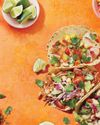
You Had Meat Tacos
"When it's done properly, taco should be a verb," declared Jonathan Gold, the late restaurant critic of the Los Angeles Times. Tacos are much more than a meal; they're an action.
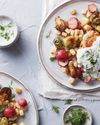
The Multitasker
Collagen usually makes headlines for its skin-saving benefits. But did you know that it's also an essential nutrient for joint health? (Especially if you sit at a desk all day.)
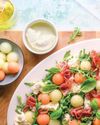
The Minimalist
Summer cooking is all about fresh and fast and avoiding the stove.

Lighten Up
If you've had an air fryer in your online cart since the start of the pandemic, it's time to commit. Let's just say it'll change your life.
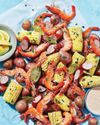
JUST RIGHT
The classic low-country boil is a celebration of place, tradition and ratio.
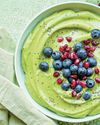
Recovery Days
The mantra that food is fuel is gold, but food as refuel is equally valuable.

Lower your impact without sacrificing satisfaction.
Eat like a Reducetarian.